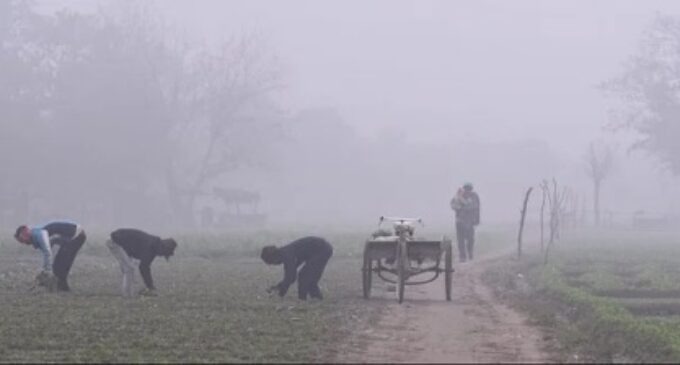Dense fog engulfs Delhi, road traffic; fog reduces visibility in large parts of Haryana, Punjab

NEW DELHI, DEC 20: Dense to very dense fog engulfed the Indo-Gangetic plains, including Delhi, for the second morning on the trot on Tuesday, lowering visibility to 50 metres in the city and affecting road traffic and train movement.
Flight operations, however, were unaffected, an airport official said.
According to the India Meteorological Department (IMD), very dense fog is when visibility is between 0 and 50 metres, 51 and 200 is dense, 201 and 500 moderate, and 501 and 1,000 shallow.
The Met Office had on Monday forecast that the Indo-Gangetic plains may see “dense to very dense” fog over the next five days, which may result in the cancellation and diversion of trains and flights.
On Tuesday, 11 trains were reported running late by one to five hours.
Visibility dropped to 50 metres at the Palam and Safdarjung airports between 5:30 am and 7 am, an IMD official said. Satellite images showed a thick layer of fog over Punjab, Haryana, Delhi, north Rajasthan and Uttar Pradesh.
“Due to moisture and light winds at lower tropospheric levels over Indo-Gangetic plains, dense to very dense fog in many/some pockets very likely over Punjab, Haryana, Chandigarh, Delhi, Himachal Pradesh and Uttar Pradesh in the night/morning hours during the next three days and dense fog in isolated pockets for subsequent two days,” the Met office had said in a statement on Monday.
The IMD also issued an advisory, saying difficult driving conditions on highways, some collisions and tripping of power lines are possible.
“Likely train delays, diversions and cancellations. Airport operations are likely to be affected by flight delays and cancellations,” it said.
The weather department said long exposures to fog can cause wheezing, coughing and shortness of breath in people having asthma bronchitis.
It could also lead to eye irritation or infection. It suggested that travellers carry essential items like water and medicine on long journeys.
The Safdarjung Observatory, the primary weather station in Delhi, recorded a minimum temperature of 6.3 degrees Celsius, two notches below normal. The maximum temperature is likely to settle around 22 degrees Celsius.
The minimum and maximum temperatures are likely to drop to five degrees Celsius and 20 degrees Celsius in the next few days.
The MeT office had earlier said that many parts of northwest India may see a warmer winter season primarily due to likely subdued activity of western disturbances.
Dense fog reduces visibility in large parts of Haryana, Punjab
Dense fog on Tuesday morning reduced visibility in most parts of Haryana and Punjab, affecting traffic movement.
The fog reduced visibility in several parts of the two states including Haryana’s Karnal, Ambala, Hisar, Rohtak, Bhiwani and Panchkula and Punjab’s Amritsar, Ludhiana, Patiala, Halwara, Adampur, Bathinda, Mohali and Rupnagar, according to a meteorological department official.
Reduced visibility on roads caused vehicles to slow down, with some drivers switching on headlights. In Haryana, cold weather conditions prevailed in Narnaul, which recorded a low of 4.5 degrees Celsius.
The minimum temperature in Hisar settled at 6 degrees Celsius, according to a meteorological department report.
Bhiwani recorded a low of 6.6 degrees Celsius and Sirsa 6.4 degrees Celsius. In Punjab, Bathinda was the coldest place with the mercury settling at a low of 3.4 degrees Celsius.
Amritsar also experienced a cold night with a low of 6.8 degrees Celsius. Ludhiana recorded a minimum temperature of 8.1 degrees Celsius, Ferozepur 6.3 degrees Celsius, Pathankot 5.8 degrees Celsius and Gurdaspur 4.8 degrees Celsius.
Chandigarh, the common capital of the two states, recorded a low of 7.6 degrees Celsius.
The weather department said cold wave to severe cold wave conditions are likely at isolated places in Haryana and Punjab while dense to very dense fog is likely at most places over the next 4-5 days.
-PTI






